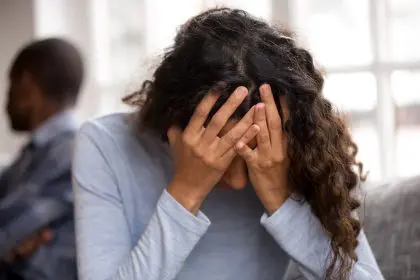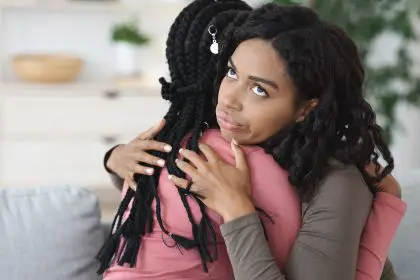Love‘s end rarely announces itself with fanfare. Instead, it often creeps in quietly, masked by our own unwillingness to see the truth. When we’re invested in a relationship, we tend to lower our guards, trust completely, and settle into a comfort that sometimes blinds us to the gradual changes taking place.
Recognition versus reality
Our hearts often recognize the truth long before our minds are willing to accept it. We brush aside small transgressions, explain away concerning behavior, and convince ourselves that temporary phases will pass. Yet each overlooked warning sign slowly chips away at our inner peace, even as we pretend not to notice.
The stages of relationship grief
The process of losing someone’s love often mirrors the stages of grief, beginning with shock and denial. We find ourselves stunned by our partner’s changed behavior, yet we quickly move to deny its significance. This emotional rollercoaster often includes:
Shock and denial emerge first, as we struggle to reconcile our partner’s actions with our expectations. We witness their changed behavior but refuse to acknowledge its meaning, creating elaborate explanations that protect us from the truth.
Pain and guilt follow, manifesting as deep emotional wounds. We often turn these feelings inward, wondering what we did wrong and how we might have prevented this outcome. This self-blame can become a destructive cycle, preventing us from seeing the situation clearly.
Anger and bargaining represent our attempts to regain control. We become furious at the situation while simultaneously trying to negotiate with reality, promising to change ourselves if only our partner’s feelings would return to what they once were.
The slow death of connection
This gradual disconnection proves more damaging than a clean break. Like a terminal illness, it slowly erodes our confidence, certainty, and ability to form healthy relationships with others. The longer we remain in denial, the more profound the damage becomes.
The path to healing
Recovery begins with awareness. Making a conscious decision to acknowledge relationship red flags when they appear marks the first step toward protecting ourselves from prolonged emotional damage.
Confronting the truth
Facing reality requires courage. Rather than letting fear silence us, we must ask difficult questions and persist until we receive satisfactory answers. Our intuition often recognizes truth before our conscious mind accepts it.
The importance of self-preservation
When emotional distance sets in, resist the urge to bargain for affection. Offering to become less than who you are to maintain a relationship only delays inevitable pain while sacrificing personal dignity.
Finding stillness
Taking time for quiet reflection allows us to honestly assess our situation. Ask yourself the crucial question: “What am I gaining from this relationship?” This self-focused inquiry isn’t selfish; it’s essential for survival and growth.
The power of letting go
Accepting that what’s dead cannot be revived opens the door to healing. Holding onto a relationship that has ended emotionally only prolongs pain and prevents new beginnings.
Embracing hope
Many find that this new hope arrives gradually, like dawn breaking after a long night. It begins with small moments: a genuine laugh shared with friends, a day where the pain feels less acute, or the first time you envision a future different from the one you had planned. These moments, though initially fleeting, begin to multiply and strengthen.
This emergent hope differs fundamentally from the hope that kept us tethered to a dying relationship. Instead of hoping for someone to change or for past feelings to resurrect, we begin hoping for our own growth, discovery, and renewal. We start recognizing possibilities we couldn’t see when our vision was clouded by denial and grief.
The process also brings unexpected clarity about ourselves. Many discover strengths they never knew they possessed, wisdom earned through suffering, and a deeper understanding of their needs and boundaries in relationships. This self-knowledge becomes a foundation for building healthier connections in the future.
Perhaps most surprisingly, we often find that letting go of a one-sided love creates space for more authentic relationships – not just romantic ones, but deeper connections with friends, family, and most importantly, ourselves. The energy once spent maintaining a failing relationship becomes available for personal growth, new experiences, and genuine connections with those who value us as we are.
The final stages of grieving a relationship often bring unexpected gifts that emerge from the depths of our pain. As we accept the reality of our situation and begin to let go, we discover a different kind of hope – one that feels more authentic and grounded than our previous wishful thinking. This hope carries a different weight, born not from desperation to salvage what’s lost, but from the quiet confidence of survival.
Many find that this new hope arrives gradually, like dawn breaking after a long night. It begins with small moments: a genuine laugh shared with friends, a day where the pain feels less acute, or the first time you envision a future different from the one you had planned. These moments, though initially fleeting, begin to multiply and strengthen.
This emergent hope differs fundamentally from the hope that kept us tethered to a dying relationship. Instead of hoping for someone to change or for past feelings to resurrect, we begin hoping for our own growth, discovery, and renewal. We start recognizing possibilities we couldn’t see when our vision was clouded by denial and grief.
The process also brings unexpected clarity about ourselves. Many discover strengths they never knew they possessed, wisdom earned through suffering, and a deeper understanding of their needs and boundaries in relationships. This self-knowledge becomes a foundation for building healthier connections in the future.
Perhaps most surprisingly, we often find that letting go of a one-sided love creates space for more authentic relationships – not just romantic ones, but deeper connections with friends, family, and most importantly, ourselves. The energy once spent maintaining a failing relationship becomes available for personal growth, new experiences, and genuine connections with those who value us as we are.
Rising stronger
Choose resurrection over prolonged suffering. The end of a relationship, while painful, doesn’t mark the end of your capacity for love and connection. Often, it serves as the beginning of a deeper relationship with yourself and a stronger foundation for future partnerships.















